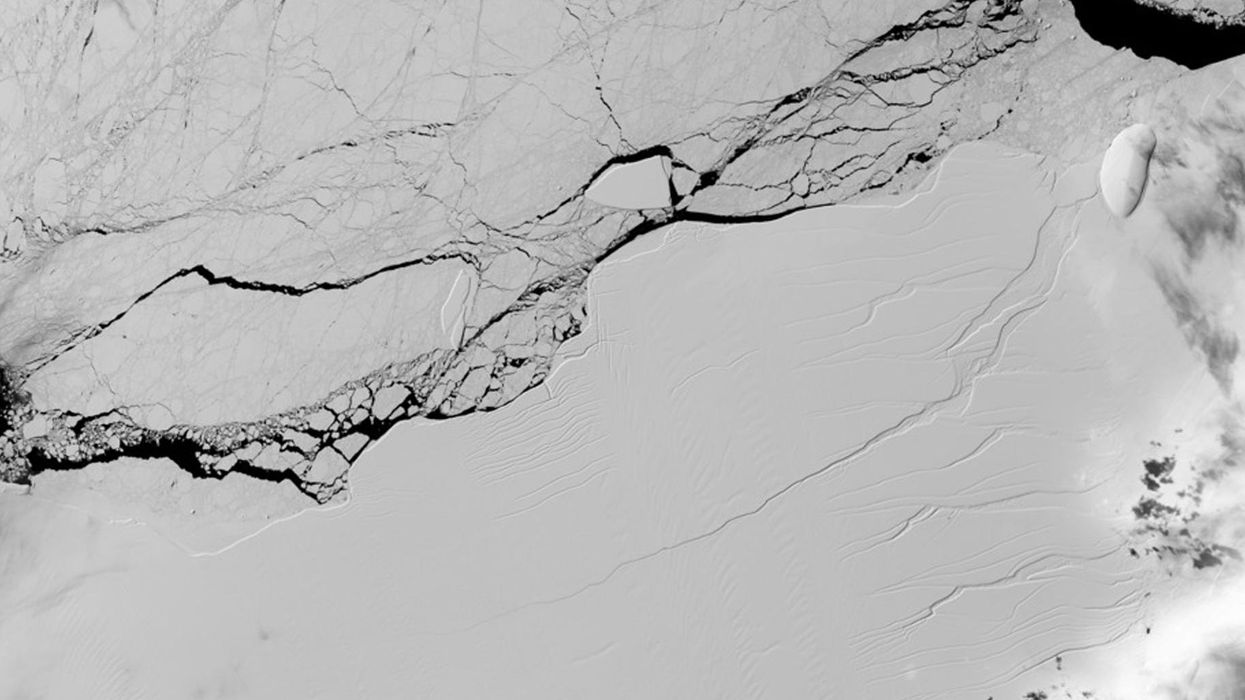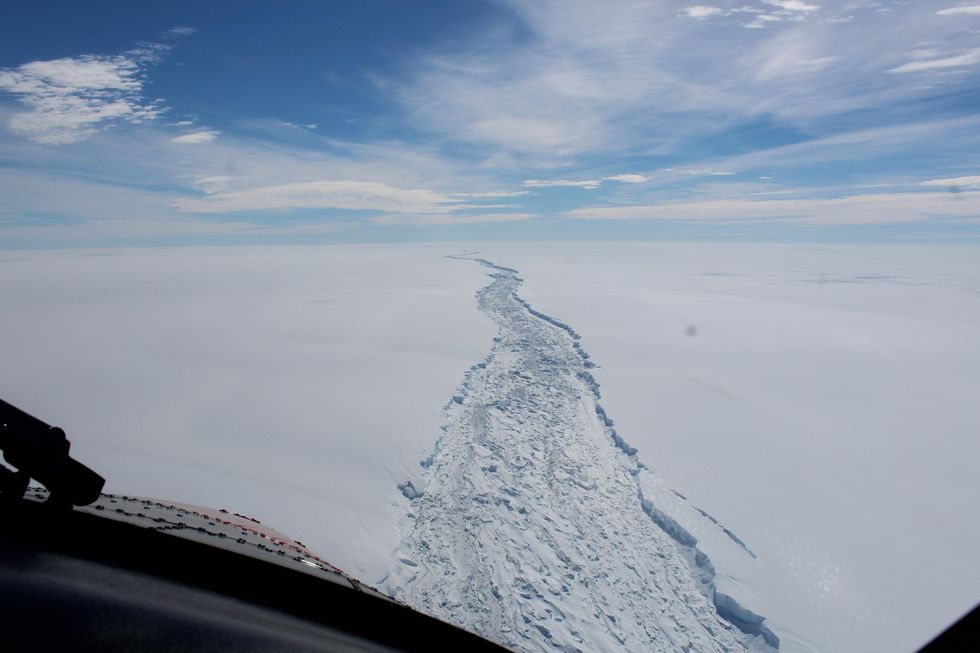Science & Tech
Louis Dor
Jul 13, 2017

Picture:
EPA/NASA/USGS Landsat
A 2,240 square mile block of ice broke away from Larcen C, a floating platform of glacial ice on the east side of the Antartic Peninsula, sometime between July 10 and July 12.
Nasa took images of the massive new iceberg via the Moderate Resolution Imaging Spectroradiometer on Nasa’s Aqua satellite, and the Visible Infrared Imaging Radiometer Suite instrument on the joint Nasa/Noaa Suomi National Polar-orbiting Partnership (Suomi-NPP) satellite.
Here's a timelapse of the shelf cracking over the years:
Picture: Nasa
The final breakage was first reported by Project Midas, an Antarctic research project based in the United Kingdom.
Larsen C is the fourth largest ice shelf on Antarctica. With the break away of the iceberg, roughly a quarter of the size of Wales, it has shrunk by roughly 10 per cent.

The iceberg weighs roughly a trillion tonnes.
Kelly Brunt, a glaciologist with Nasa’s Goddard Space Flight Center in Greenbelt, Maryland, and the University of Maryland in College Park, said:
The interesting thing is what happens next, how the remaining ice shelf responds.
Will the ice shelf weaken? Or possibly collapse, like its neighbours Larsen A and B?
Will the glaciers behind the ice shelf accelerate and have a direct contribution to sea level rise?
Or is this just a normal calving event?
Dan McGrath, a glaciologist at Colorado State University who has been studying the Larsen C ice shelf since 2008, said:
We don’t currently know what changed in 2014 that allowed this rift to push through the suture zone and propagate into the main body of the ice shelf.
The Antarctic Peninsula has been one of the fastest warming places on the planet throughout the latter half of the 20th century.
This warming has driven really profound environmental changes, including the collapse of Larsen A and B.
But with the rift on Larsen C, we haven’t made a direct connection with the warming climate.
Still, there are definitely mechanisms by which this rift could be linked to climate change, most notably through warmer ocean waters eating away at the base of the shelf.
More: Artists visualised what climate change could do to New York and it's breathtaking
Top 100
The Conversation (0)













